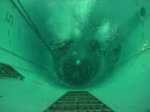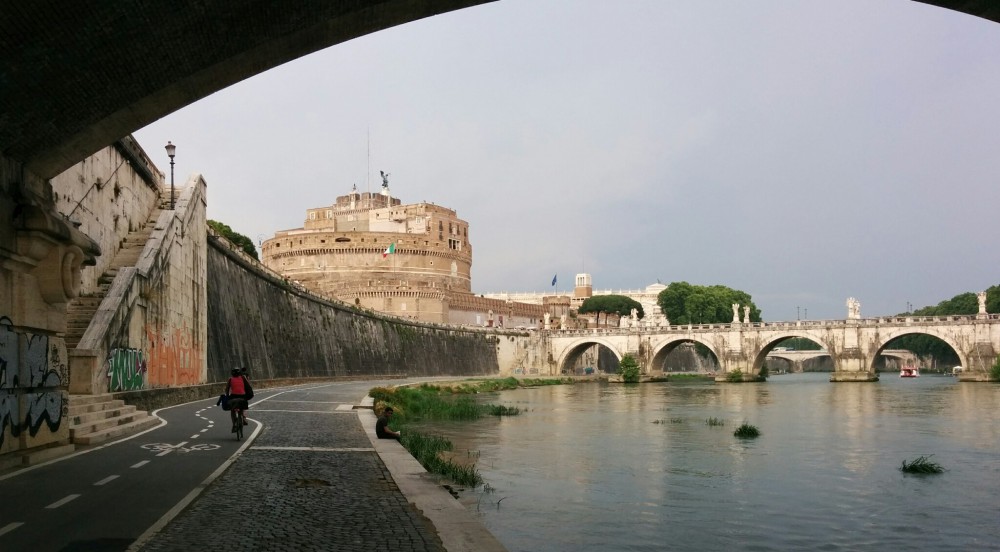 At the Naval Academy, the summers before our Third Class (sophomore) and First Class (senior) years were devoted to afloat training, with the 3/c filling enlisted billets on ships and the 1/c trying junior officer roles. This summer as Midshipmen Second Class, we were learning “everything else”. We went to Primary Flight Training (“Pri-Fly”) in Pensacola, Florida, to Amphibious warfare training at Camp Pendleton, Virginia, and to Submarine School in Groton, Connecticut,. I told you about Pri-Fly back on 21 May 2016 (https://freewheelingfreelancer.com/2016/05/21/sea-story-pri-fly-1967/). After learning how to fly, we headed north to Submarine School.
At the Naval Academy, the summers before our Third Class (sophomore) and First Class (senior) years were devoted to afloat training, with the 3/c filling enlisted billets on ships and the 1/c trying junior officer roles. This summer as Midshipmen Second Class, we were learning “everything else”. We went to Primary Flight Training (“Pri-Fly”) in Pensacola, Florida, to Amphibious warfare training at Camp Pendleton, Virginia, and to Submarine School in Groton, Connecticut,. I told you about Pri-Fly back on 21 May 2016 (https://freewheelingfreelancer.com/2016/05/21/sea-story-pri-fly-1967/). After learning how to fly, we headed north to Submarine School.
Sub School should have been boring, because we spent so much time in classrooms, but I was psyched. For as long as I could remember, I had wanted to be a submarine officer.  My father had sea stories of his own (most of which I had to learn through war records research, he was so modest) from Pearl Harbor, then nine combat patrols in the Pacific in World War II. My enthusiasm led me to take the Submarine School course by correspondence in high school.
My father had sea stories of his own (most of which I had to learn through war records research, he was so modest) from Pearl Harbor, then nine combat patrols in the Pacific in World War II. My enthusiasm led me to take the Submarine School course by correspondence in high school.  I had to be the first Annapolis midshipman that the instructors had seen who could diagram all the piping systems of the USS Becuna from memory.
I had to be the first Annapolis midshipman that the instructors had seen who could diagram all the piping systems of the USS Becuna from memory.
Sometime during my 3/c year, I learned that my dream of piloting diesel submarines into tiny harbours, and surfacing to charge batteries in rough seas would never happen. The Navy had only a few diesel boats in commission and assignment of their “cream of the crop” Naval Academy graduates to the lowly boats was out of the question. I hated being called “cream of the crop.” I had absolutely no desire to join the “Rickover Navy” of nuclear submarines and spend my entire cruise underwater. I was just as set against aircraft carriers and other large ships, which I found about as exciting as an office building.  By the time I arrived at Submarine School in Groton, I was already set on a career in the Surface Navy, specifically in destroyers (because they would not let me volunteer for minesweepers, which were smaller, but also off-limits to the “cream”).
By the time I arrived at Submarine School in Groton, I was already set on a career in the Surface Navy, specifically in destroyers (because they would not let me volunteer for minesweepers, which were smaller, but also off-limits to the “cream”).
There was one activity at Groton, however, that had me intrigued: submarine pre-qualification tests (“pre-qual”). These had not changed since the Second World War, so they were the same tests that my father had passed as a young lieutenant. Though I was leaning to surface duty, I wanted to know that at least I would have been qualified to go into submarines, and that it was my choice to do so or not.
The old boats did not dive very deep, but deep enough that if you had to be rescued, there was the danger of decompression sickness, or “the bends.” The high pressure below 60 metres (200 ft) compresses the nitrogen in the blood stream, so if you come up too fast, the gas bubbles out of the blood like the carbonation in a bottle of soda pop. Painful and often deadly.
 Should a damaged submarine be lucky (?) enough to settle on the bottom, rescuers could lower an escape pod “bell” to the deck of the boat. It would attach itself over the escape hatch. The crew would go into the bell, and then be lifted very slowly to the surface so that they did not get the bends. The device was only ever used once, but to evacuate 33 men from the USS Squalus.
Should a damaged submarine be lucky (?) enough to settle on the bottom, rescuers could lower an escape pod “bell” to the deck of the boat. It would attach itself over the escape hatch. The crew would go into the bell, and then be lifted very slowly to the surface so that they did not get the bends. The device was only ever used once, but to evacuate 33 men from the USS Squalus.
If the boat settled in shallower water, the crew could safely escape by simply floating out the escape hatch to the surface. It’s scary, but no one gets the bends.
 TThere are two physical tests for pre-qual: decompression and the Submarine Escape Training Tank (SETT). For the first, we were locked into a compression chamber that increases the pressure until it was the same as a submarine at depth. The staff observed us as the pressure was slowly brought back to sea level. Not very exciting, and no one in my squad got sick.
TThere are two physical tests for pre-qual: decompression and the Submarine Escape Training Tank (SETT). For the first, we were locked into a compression chamber that increases the pressure until it was the same as a submarine at depth. The staff observed us as the pressure was slowly brought back to sea level. Not very exciting, and no one in my squad got sick.
The SETT was another story. One at a time, we entered a 60-m tank of water through a watertight chamber at the bottom. The chamber was flooded and the door opened. We had to take a breath, then let ourselves rise to the surface.
was another story. One at a time, we entered a 60-m tank of water through a watertight chamber at the bottom. The chamber was flooded and the door opened. We had to take a breath, then let ourselves rise to the surface.
I had allergies and I was afraid that my stuffy nose might be a problem. That only aggravated my concern as I stepped into the chamber. I recited the instructions like a mantra, trying to quell the panic as the water came into the chamber. I wanted so much for my father (who lived nearby in Old Lyme, Connecticut) to know that I had passed the test. (later, long retired from active duty, he would be the only engineer in his office in New London who could pass the tests, and thus be sent to the boats at sea to check out the floating wire antennae that his office was developing. Big embarrassment for the much younger staff!)
 These thoughts flashed through my mind as I recited the mantra. I almost forgot to take a breath, but it might not have made a difference. Covered with water, I saw the door open. I swam into the tank and began swimming for the surface. Then I remembered the instructions, “Float, don’t swim. Save your oxygen.” I stopped flailing and let myself rise.
These thoughts flashed through my mind as I recited the mantra. I almost forgot to take a breath, but it might not have made a difference. Covered with water, I saw the door open. I swam into the tank and began swimming for the surface. Then I remembered the instructions, “Float, don’t swim. Save your oxygen.” I stopped flailing and let myself rise.
Maybe if I did it a few more times, it would feel euphoric to rise through the water to the light at the surface. But that day, on my first try, I was desperately quelling the panic that rose to my throat like the never-ending stream of air that came from my lungs. No amount of pre-qual briefing could ready me for the feeling of continuously exhaling like that. I desperately wanted to take a breath. My body was screaming that it was time for the lungs to expand, but they were already expanded. As I rose to the surface, the air in my lungs continued to expand and come out of my mouth and nose.
As I reached for the light, I thought that it was pulling away, and I nearly lost control. Suddenly, I broke the surface, and could take a big, beautiful breath. I almost could not believe that I was swimming to the edge of the deep tank.
 I immediately felt the satisfaction of having passed the tests for submarine duty. That summer, I had learned to fly airplanes (and escape underwater from the Dilbert Dunker), I had swum to the surface from a “submarine”,
I immediately felt the satisfaction of having passed the tests for submarine duty. That summer, I had learned to fly airplanes (and escape underwater from the Dilbert Dunker), I had swum to the surface from a “submarine”,  and I had stormed a beach with other “marines” and set up a defensive perimeter ashore. I had spent more time in chlorinated pool water with the various tests than in the salt water that was my element. Most of my classmates dreamed of following one of the career paths that we were exposed to that summer (aviation, submarines, or Marine Corps). I was happy that I could have chosen any of them, but also firmer in my choice:
and I had stormed a beach with other “marines” and set up a defensive perimeter ashore. I had spent more time in chlorinated pool water with the various tests than in the salt water that was my element. Most of my classmates dreamed of following one of the career paths that we were exposed to that summer (aviation, submarines, or Marine Corps). I was happy that I could have chosen any of them, but also firmer in my choice:
 I must go down to the sea again,
I must go down to the sea again,
To the lonely sea and the sky,
And all I ask is a tall ship
And a star to steer her by…
Next week, some observations about food in Europe vs. North America. Till then
Smooth roads and tailwinds,
Jonathan

Wow!! Jonathan…As the young people say these days….YOU were a “hottie” at the Naval Academy!!! Far Parker
LikeLike
Pretty hot yourself, Far, even today! 🙂
LikeLike